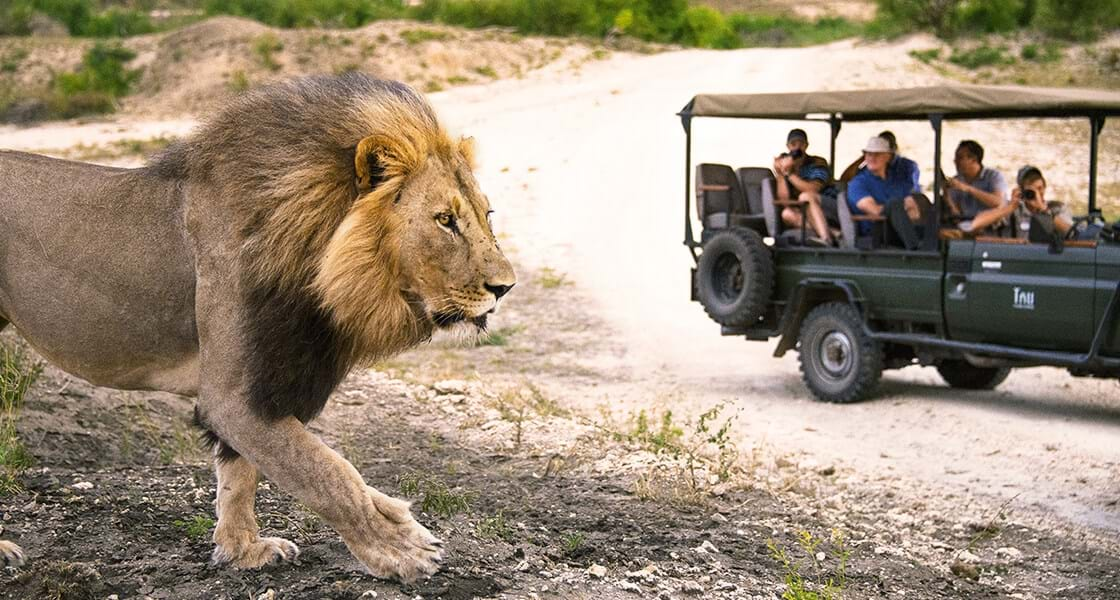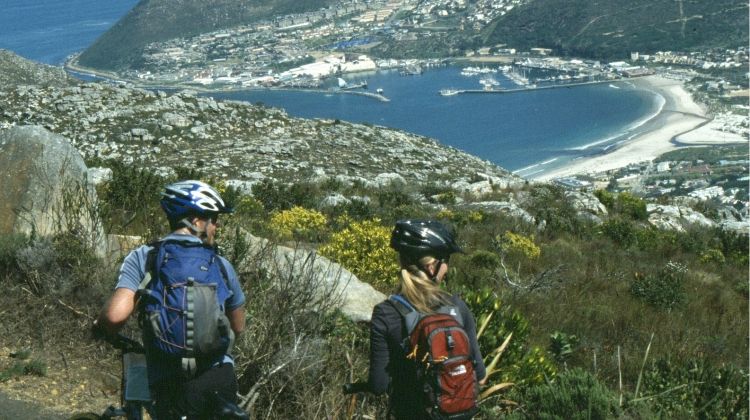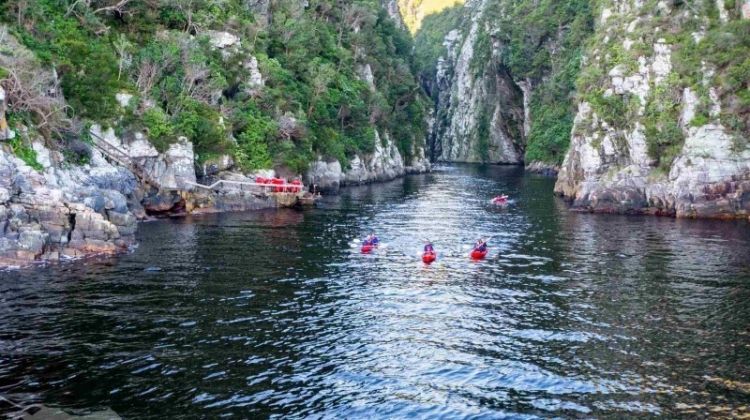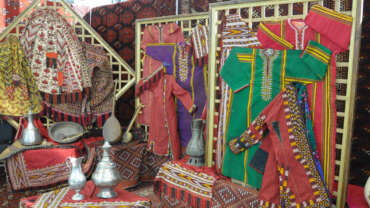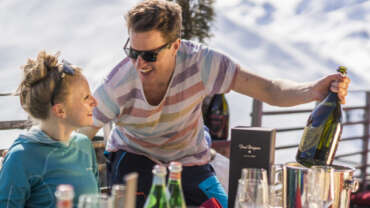South Africa - Alive with Possibility!
Adventure tourism or Adventure Travel is a type of niche tourism that combines physical activity, as well as promoting excitement, adrenaline, and exploration. There is also a perceived sense of risk that tends to come with adventure tourism. Not all adventure tourism is extreme though, it could be anything from riding a bike on Table Mountain to white water rafting on the Zambezi river.
Adventure tourism is steadily growing in Southern Africa as there are a multitude of adrenaline inducing experiences in a whole host of beautiful and stunning natural landscapes.
Cape Town and the Garden route in South Africa offer a variety of exciting adventure tours. From the world’s highest bungy jump, to zip lining through tree tops and over waterfalls, to kayaking with whales, to skydiving, or even abseiling off Table Mountain.
South Africa offers 3 000 kilometres of coastline along with breathtaking mountains – often side by side. The country’s diverse terrain, together with an ideal climate for outdoor activities, make it a rich hunting ground for adrenaline seekers.
SA offers world-class climbing, surfing, diving, hiking, horseback safaris, mountain biking, river rafting – and just about any other extreme activity you can name, all supported by dedicated operators.
We’ve got some of the best, and most diverse, rock climbing in the world. The cliffs are big, wild – and still being discovered. Cape Town is particularly well endowed, but the action is far from limited to the Western Cape.
River trips range from mostly scenic to grade five whitewater washing machines. The art of canyoning – known as kloofing in South Africa – is another hot favourite, with both self-guided and escorted trips on offer.
There are over a hundred listed paragliding or hang gliding launch sites – and many more less well known – with schools in every centre. Also up in the air, there are many opportunities for helicopter rides, balloon flights, aerobatics, skydiving and microlight flights.
Thousands of kilometres of hiking trails wind around the country in desert, forest, mountain or coastal terrain, many with mountain bike trails adjacent.
There are wonderful easy horse trails through vineyards, on the beach or in the mountains and – for the more adventurous – horseback safaris in big game country.
And if it’s a very quick high you’re after, the 216 metre Bloukrans bridge on the border of the Eastern and Western Cape has the highest commercial bungee jump in the world.
Or you can abseil over crashing waves at the western head at Knysna, hang out a kilometre high over Cape Town, do a combination abseiling and canyoning trip on the Storms River Gorge, or rapp jump down buildings in Durban or Johannesburg. Gravity pulls in spectacular fashion in South Africa!
South Africa is a melting pot of cultures and a country with beauty beyond comprehension. Locals are spoilt for choice when it comes to adventure activities.
If you are headed to the sunny shores of South Africa in search of an adrenaline rush, be sure you will get it. Whether it’s swimming with seahorses in Knysna or braving the highest bungee jump in the world, you will be blown away by these unforgettable adventure activities in South Africa.
History of South Africa
The prehistory and history of South Africa span nearly the entire known existence of human beings and their ancestors—some three million years or more—and include the wandering of small bands of hominins through the savanna, the inception of herding and farming as ways of life, and the construction of large urban centres. Through this diversity of human experience, several trends can be identified: technological and economic change, shifting systems of belief, and, in the earlier phases of humanity, the interplay between physical evolution and learned behaviour, or culture. Over much of this time frame, South Africa’s past is also that of a far wider area, and only in the last few centuries has this southernmost country of Africa had a history of its own. This article focuses on the country of South Africa. For information about the country in its regional context, see Southern Africa.
Prehistory
The earliest creatures that can be identified as ancestors of modern humans are classified as australopithecines (literally “southern apes”). The first specimen of these hominins to be found (in 1924) was the skull of a child from a quarry site at Taung in what is now the North-West province. Subsequently more australopithecine fossils were discovered in limestone caves farther northeast at Sterkfontein, Swartkrans, and Kromdraai (collectively designated a World Heritage site in 1999), where they had originally been deposited by predators and scavengers.
South Africa’s prehistory has been divided into a series of phases based on broad patterns of technology. The primary distinction is between a reliance on chipped and flaked stone implements (the Stone Age) and the ability to work iron (the Iron Age). Spanning a large proportion of human history, the Stone Age in Southern Africa is further divided into the Early Stone Age, or Paleolithic Period (about 2,500,000–150,000 years ago), the Middle Stone Age, or Mesolithic Period (about 150,000–30,000 years ago), and the Late Stone Age, or Neolithic Period (about 30,000–2,000 years ago). The simple stone tools found with australopithecine fossil bones fall into the earliest part of the Early Stone Age.
The Early Stone Age
Most Early Stone Age sites in South Africa can probably be connected with the hominin species known as Homo erectus. Simply modified stones, hand axes, scraping tools, and other bifacial artifacts had a wide variety of purposes, including butchering animal carcasses, scraping hides, and digging for plant foods. Most South African archaeological sites from this period are the remains of open camps, often by the sides of rivers and lakes, although some are rock shelters, such as Montagu Cave in the Cape region.
Change occurred slowly in the Early Stone Age; for more than a million years and over a wide geographic area, only slight differences existed in the forms of stone tools. The slow alterations in hominins’ physical appearance that took place over the same time period, however, have allowed physical anthropologists to recognize new species in the genus Homo. An archaic form of H. sapiens appeared about 500,000 years ago; important specimens belonging to this physical type have been found at Hopefield in Western Cape province and at the Cave of Hearths in Mpumalanga province.
The Middle Stone Age
The long episode of cultural and physical evolution gave way to a period of more rapid change about 200,000 years ago. Hand axes and large bifacial stone tools were replaced by stone flakes and blades that were fashioned into scrapers, spear points, and parts for hafted, composite implements. This technological stage, now known as the Middle Stone Age, is represented by numerous sites in South Africa.
Open camps and rock overhangs were used for shelter. Day-to-day debris has survived to provide some evidence of early ways of life, although plant foods have rarely been preserved. Middle Stone Age bands hunted medium-sized and large prey, including antelope and zebra, although they tended to avoid the largest and most dangerous animals, such as the elephant and the rhinoceros. They also ate seabirds and marine mammals that could be found along the shore and sometimes collected tortoises and ostrich eggs in large quantities. The rich archaeological deposits of Klasies River Mouth (see Klasies), on the Cape coast west of Port Elizabeth, have preserved the first known instance of shellfish being used as a food source.
Klasies River Mouth has also provided important evidence for the emergence of anatomically modern humans. Some of the human skeletons from the lower levels of this site, possibly 115,000 years old, are decidedly modern in form. Fossils of comparable age have been excavated at Border Cave, in the mountainous region between KwaZulu-Natal province and Eswatini.
The Late Stone Age
Basic toolmaking techniques began to undergo additional change about 40,000 years ago. Small finely worked stone implements known as microliths became more common, while the heavier scrapers and points of the Middle Stone Age appeared less frequently. Archaeologists refer to this technological stage as the Late Stone Age. The numerous collections of stone tools from South African archaeological sites show a great degree of variation through time and across the subcontinent.
The remains of plant foods have been well preserved at such sites as Melkhoutboom Cave, De Hangen, and Diepkloof in the Cape region. Animals were trapped and hunted with spears and arrows on which were mounted well-crafted stone blades. Bands moved with the seasons as they followed game into higher lands in the spring and early summer months, when plant foods could also be found. When available, rock overhangs became shelters; otherwise, windbreaks were built. Shellfish, crayfish, seals, and seabirds were also important sources of food, as were fish caught on lines, with spears, in traps, and possibly with nets.
Dating from this period are numerous engravings on rock surfaces, mostly on the interior plateau, and paintings on the walls of rock shelters in the mountainous regions, such as the Drakensberg and Cederberg ranges. The images were made over a period of at least 25,000 years. Although scholars originally saw the South African rock art as the work of exotic foreigners such as Minoans or Phoenicians or as the product of primitive minds, they now believe that the paintings were closely associated with the work of medicine men, shamans who were involved in the well-being of the band and often worked in a state of trance. Specific representations include depictions of trance dances, metaphors for trance such as death and flight, rainmaking, and control of the movement of antelope herds.
People of South Africa
Ethnic groups
Government-determined “racial” and ethnic classification, embodied in the Population Registration Act in effect from 1950 to 1991, was crucial in determining the status of all South Africans under apartheid. The act divided South Africans at birth into four “racial” categories—black, white, Coloured (mixed race), and Asian—though these classifications were largely arbitrary, based on considerations such as family background and cultural acceptance as well as on appearance.
The original Khoekhoe and San peoples of South Africa scarcely exist as distinct groups inside the country today. Many intermarried with other African peoples who arrived before European conquest, and others intermarried with Malagasy and Southeast Asian slaves under white rule to form the majority of the Coloured population. Bantu-speaking Africans entered the area from the north roughly 1,800 years ago, and their descendants today constitute more than three-fourths of South Africa’s population.
The population formerly classified as Coloured descended from Khoisan (Khoekhoe and San) peoples, slaves imported by the Dutch from Madagascar and what are now Malaysia and Indonesia, Europeans, and Bantu-speaking Africans. Several distinct subethnic groups can still be identified, such as the Malays, who largely originated from Indonesian Muslim slaves, and the Griquas, who trace their origins to a specific historical Khoekhoe community. While some Malays and Griquas have continued to identify themselves as Coloured, others who were so classified by the apartheid government have rejected the label entirely. In many respects they cannot be distinguished culturally or physically from the white population. Those formerly classified as Coloured are concentrated in the western half of the country, particularly in Western and Northern Cape provinces and the westernmost parts of Eastern Cape province, where they form a majority in most districts.
South Africans of Indian descent, who were classified under apartheid as Asian, form a minority. They went to South Africa originally as indentured workers imported by the British to the former Natal colony beginning in the 1850s and were followed by a smaller group of immigrant traders later in the 19th century. Most of them now live in KwaZulu-Natal and to a lesser extent in Gauteng, Limpopo, and Mpumalanga provinces. Almost all Indian South Africans are urban dwellers. Small communities of other ethnic Asians, including Chinese, live in some of the cities.
Most white South Africans are descendants of European settlers—primarily from Great Britain, Germany, and the Netherlands—who began to migrate to South Africa in the mid-17th century.
Languages
The black African population is heterogeneous, falling mainly into four linguistic categories. The largest is the Nguni, including various peoples who speak Swati (primarily the Swazi peoples) as well as those who speak languages that take their names from the peoples by whom they are primarily spoken—the Ndebele, Xhosa, and Zulu (see also Xhosa language; Zulu language). They constitute more than half the black population of the country and form the majority in many eastern and coastal regions as well as in the industrial Gauteng province. The second largest is Sotho-Tswana, again including various peoples whose language names are derived from the names of peoples who primarily speak them—the Sotho, Pedi, and Tswana. Speakers of Sotho-Tswana languages constitute a majority in many Highveld areas. The other two primary linguistic groups are the Tsonga (or Shangaan) speakers (primarily the Tsonga peoples), concentrated in Limpopo and Mpumalanga provinces, and the Venda speakers (primarily the Venda peoples), located largely in Limpopo province.
White South Africans form two main language groups. More than half of them are Afrikaans speakers, the descendants of mostly Dutch, French, and German settlers. The remainder consists largely of English speakers who are descended mainly from British colonists, though there are a sizable minority of Portuguese and smaller groups of Italians and others. Most of the population formerly classified as Coloured speaks Afrikaans or, to a lesser extent, English.
Eleven languages (Afrikaans, English, Ndebele, Pedi, Sotho, Swati, Tsonga, Tswana, Venda, Xhosa, and Zulu) hold official status under the 1996 constitution, and an additional 11 (Arabic, German, Greek, Gujarati, Hebrew, Hindi, Portuguese, Sanskrit, Tamil, Telegu, and Urdu) are to be promoted and developed; all languages are spoken to varying degrees in different regions. In some rural areas most residents speak neither Afrikaans nor English, but those two languages allow for communication in most parts of the country. English appears to predominate to an increasing extent in official, educational, and formal business spheres, which reflects a shift away from Afrikaans as the predominant language of government.
Religion
The majority of South Africans are Christians. The largest established Christian denominations directly rooted in European settlement but now drawing members from all ethnic groups are the Methodist, Roman Catholic, Anglican, and Dutch Reformed churches. A large number of people follow independent African Christian churches, which vary in size from a few to millions of members. These faiths differ widely in their degree of theological orthodoxy or heterodoxy from traditional Christian beliefs, but they tend to be more open to aspects of indigenous culture and religion and to emphasize physical and spiritual healing. There is a sizable minority that adheres to traditional beliefs. Other religions are Hinduism, among the majority of Indians; Islam, among many Indians and Malays; and Judaism, among a minority of the white population.
Art & Culture of South Africa
Art
Rock and cave art attributable to the San, some of which is thought to be about 26,000 years old, has been found across much of Southern Africa. The greatest number of paintings, which primarily depict human figures and such animals as elands, elephants, cattle, and horses, have been found in the Drakensberg mountains (part of uKhahlamba/Drakensberg Park, designated a UNESCO World Heritage site in 2000). Terra-cotta figures dated to AD 500 are known as Lydenburg heads, named after the town in which they were discovered. Excavations at Bambandyanalo and Mapungubwe in the Limpopo River valley have found gold animal statues as well as a wealth of pottery and clay animal figurines. More recently, Zulu wooden statues, produced in the 19th century before the Anglo-Zulu War (1879), are further examples of South Africa’s artistic history.
Visual artists continue to create in traditional forms, but many contemporary artists—including Jane Alexander, Helen Sebidi, Willie Bester, and Bongiwe Dhlomo—employ Western techniques as well.
Literature
South African literature proved to be an important expression of resistance against apartheid throughout the 20th century. One of its best-known works is Alan Paton’s novel Cry, the Beloved Country (1948), which drew world attention to the separatist system. Two decades later, literary resistance organized around journals and magazines, whose contributors were collectively known as the Sestigers (“Sixtyers,” writers of the 1960s). Reacting against the National Party’s increasingly authoritarian policies, the Sestigers grew in influence but soon divided into factions insisting on the need for violent revolution on the one hand and art for art’s sake on the other. In the 1970s many books continued to criticize the apartheid regime, including André Brink’s Kennis van die aand (1973; Looking on Darkness), Nadine Gordimer’s Burger’s Daughter (1979), and Breyten Breytenbach’s In Africa Even the Flies Are Happy (1977). Also during this time, the government enacted the Publications Act of 1974, which expanded and strengthened existing censorship policies. Many authors went into exile; some did not return until the 1990s, while others remained abroad even after the end of apartheid. Brink, however, remained in South Africa and wrote, in Writing in a State of Siege (1983), about how unsuccessful the National Party had been in silencing South African writers:
Black literature
Of those three streams, the least known is black literature. South Africa’s various black cultures have rich oral traditions, including narrative, poetic, historical, and epic forms, which have changed and adapted as black life has changed. While there is a fear that classical forms of the oral traditions are at risk of being lost with the spread of literacy and recorded music, these oral traditions have exerted a major influence on the written literatures of South Africa, merging with literary influences from elsewhere in Africa, the Caribbean and the Americas, and Europe.
Such writers as Oliver Kgadime Matsepe (North Sotho), Thomas Mofolo (South Sotho), Guybon Sinxo (Xhosa), and B.W. Vilakazi (Zulu) have been more deeply influenced in their written work by the oral traditions of their cultures than by European forms. Other black writers, beginning in the 1930s with Solomon Plaatje and his historical novel Mhudi (1930), have explicitly used black oral history when writing in English. As literacy spread, a commercial press developed, primarily in English, that was aimed at a black audience and shaped new generations of writers. Notable were the contributors to the journal Drum, including Nat Nakasa, Can Themba, Bloke Modisane, and Lewis Nkosi, who vividly captured the rhythms of urban township life and the milieu of rising black ambitions for freedom. Government crackdowns in the 1960s crushed much of that spirit and forced Dennis Brutus, Ezekiel Mphahlele, Mazisi Kunene, and other writers into exile.
Afrikaans literature
The second stream, literature written in Afrikaans, has its origins in the culture and arts of the early Afrikaner nationalist movement. Beginning in the 1880s, the movement laid the foundation for the political nationalism that coalesced following British conquest and contributed to the ideology of apartheid. In the 1920s—through the secret organization called the Afrikaner-Broederbond and through cultural organizations—teachers, academics, Dutch Reformed Church ministers, writers, artists, and journalists began to develop a powerful, if also authoritarian, vision of an exclusive, divinely ordained national “racial” identity. That vision, promoted in literature, drama, music, and public commemorative sculpture and other forms of expression, became apartheid’s official culture, asserting the paradoxical proposition that the other, non-Afrikaner cultures should develop along their own lines, in a manner prescribed by the state.
Writers of Afrikaans literature later explored more-universal themes—such as love, conflict, nature, and daily life—and, eventually, even opposition to apartheid. The first two decades of the 20th century were dominated by such poets as Jakob Daniel du Toit and C. Louis Leipoldt. The appearance of the Dertigers (“Thirtyers,” poets of the 1930s), a group of talented poets including W.E.G. Louw, signified the new standard in Afrikaans literature. Prominent among the Sestigers, who followed decades later, were the novelists Etienne Leroux and Brink and the poet Breytenbach. Post-Sestigers writers of note include the poets Wilma Stockenström, Sheila Cussons, and Antjie Krog and the novelists Elsa Joubert, Karel Schoeman, and Etienne van Heerden.
Anglophone literature
The third stream, Anglophone literature, arose in the late 19th and the early 20th century with writers such as Olive Schreiner, an early feminist who is credited with writing the first great South African novel, The Story of an African Farm (1883), and Herman Charles Bosman, whose short stories chronicled the foibles of life on the veld. After World War II Paton, Gordimer (who later was awarded the 1991 Nobel Prize for Literature), and others produced what might be called a literature of the liberal conscience, combining sharp and critical social observation with meditation on the responsibilities and fates of individuals enmeshed in oppressive situations they lack the power to change.
Multicultural literature
During the 1970s there emerged in the arts powerful themes of national and multiracial, multilingual cultural patterns, as writers and artists from all backgrounds concentrated on exploring and portraying the turmoil affecting South African society. Reaction to apartheid engendered a sense of black culture and history that drew inspiration from West and North African, Caribbean, and African American intellectual movements. The themes of black consciousness evident in the poetry and prose of urban writers such as Mothobi Mutloatse, Miriam Tlali, Mbulelo Mzamane, and Njabulo Ndebele and published in such periodicals as Staffrider were derived from the literary and oral traditions of black languages in South Africa and in literature by blacks in European languages.
For many decades, works with strong political themes or explicit sexuality were banned. Authors such as Breytenbach, Brink, Leroux, and Dan Roodt, whose works were banned, began exploring the cultural ground on which Afrikaners would need to make their way in a reconstructed and democratic South Africa.
The authors Adam Small and Alex La Guma have written vividly in Afrikaans and English, respectively, of the effects of racial discrimination and of the complex and frequently violent nature of life in South Africa. Many black and white writers addressing these and other themes have received international recognition. Writers such as J.M. Coetzee (awarded the 2003 Nobel Prize for Literature), Sipho Sepamla, and Mongane Wally Serote have joined such established figures as Mphahlele, Paton, Brink, and Leroux in bringing South African literary life to the wider world. With the end of apartheid, some South African writers have tried to write about nonapartheid subjects, while others cannot seem to escape the topic.
Theatre
South African playwrights responded to the new cultural and political milieu with such innovations as multilingual plays. Support for the newer indigenous theatre came from independent and nonracial theatrical organizations, such as the Market Theatre in Johannesburg. Plays by Athol Fugard, Mbongeni Ngema, Fatima Dike, Zakes Mda, and Pieter-Dirk Uys have been performed worldwide.
Cultural Life
Blending Western technology with indigenous technology, Western traditions with African and Asian traditions, South Africa is a study in contrasts. It also provides lessons in how cultures can sometimes blend, sometimes collide; for example, within a short distance of one another can be found the villas of South Africa’s white elite and the tar-paper shacks of black day labourers, office buildings with the most sophisticated electronic wiring and one-room houses that lack electricity. A great gulf still exists between the white minority and the black majority in matters of education and economic opportunity. Yet, South Africa is making steady progress in erasing some of these historic disparities and their consequences. Daily life is better for most of its people, and culture and the arts, which sometimes were forced into exile, are flourishing in the free climate of the postapartheid era.
Daily life and social customs
As they are everywhere in the world, patterns of daily life in South Africa are conditioned by social class, ethnicity, religion, and residence: the life of a black diamond miner in Limpopo province is much different from that of an Indian shopkeeper in Durban, an Afrikaner office worker in Johannesburg, or a teacher of English extraction in Cape Town. As the government struggles to expand the economy in order to provide equally for all citizens, great disparities continue to exist. Yet, all these people are likely to enjoy much the same pleasures: the company of family and friends, films from the studios of Johannesburg and Hollywood alike, music and dance, and visits to South Africa’s magnificent national parks and scenic landscapes.
The great mixture of cultures makes for a wide variety of food choices in the country, from the traditional food of various cultures to the cosmopolitan cuisine that is available in many large cities throughout the world. African food is centred around vegetables, with maize (corn) as an important staple, often in the form of a porridge known as mealie pap. A dish made from broken dried corn kernels, sugar beans, butter, onions, potatoes, chiles, and lemon is called umngqusho. It is still possible to visit a shebeen, an African tavern where beer is home-brewed. Dutch and English settlers introduced sausages and bobotie, a meat pie made with minced meat that has been cooked with brown sugar, apricots and raisins, milk-soaked mashed bread, and curry flavouring. The Portuguese introduced various fish dishes to the country. The Indian influence added spices and even samosas, savoury pastries popular as a snack. All South Africans enjoy the braai, a South African barbeque. Beef, chicken, lamb, pork, ostrich, and other game meat are savoured, although meat consumption is limited in many places because of its expense.
Among its holidays, South Africa celebrates Human Rights Day on March 21, Freedom Day on April 27 (to celebrate the first majority elections in 1994), National Women’s Day on August 9, Heritage Day on September 24, and Day of Reconciliation on December 16.
Feel the beat of Cape Town, the Mother City!
Cape Town, South Africa’s second-largest city, ranks among the most beautiful in the world. With its larger-than-life mountain overlooking the City Bowl, harbour, white beaches and Robben Island beyond, this is a tourist’s playground. Two World Heritage Sites, the sprawling Winelands, untouched nature reserves, beautiful botanic gardens and a buzzing waterfront are just the start of your adventure when you visit this special city.
With a population of 3.7 million, Cape Town is South Africa’s second most populous city, a quintessential melting pot of creativity, cuisine and colour.
Its strategic geographic position at the tip of Africa has seen foreign visitors stopping off at the Cape since the 1400s, each contributing unique cultural influences that make up the fabric of modern-day Cape Town.
A cultural fusion of Malay, Dutch, French, Portuguese and African flavour is richly reflected in Cape Town’s stylish restaurant menus, where locally produced wines complement fresh seafood and spicy curry dishes.



